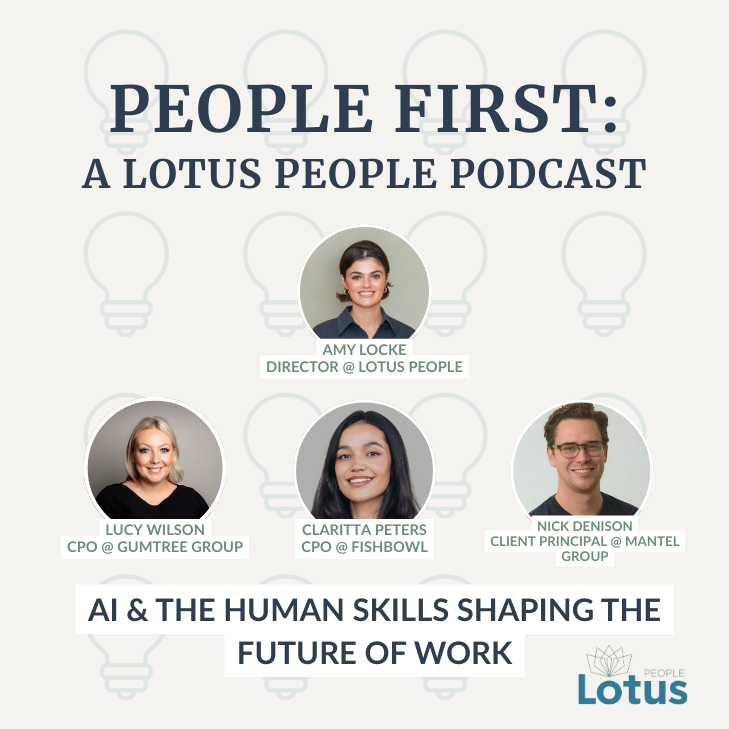First Impressions – 8 tips for getting your resume noticed!
I see A LOT of resumes every day; the good, the bad and the ugly. In most job searching scenarios your CV is your first point of contact with the employer. It is your chance to sell yourself and make a positive first impression. Below is a little list of insider tips that I think make for an eye-catching resume;
- Formatting – Your resume is a great opportunity to qualify your skills. If you mention you have great attention to detail and are organised but change fonts three times throughout your CV the employer will probably question whether you do possess these attributes. The best CVs have clear headings, are written in an easy to read font such as Calibri, utilize bullet points rather than paragraphs and list work experience in reverse chronological order. Also, don’t forget to use spellcheck! Spellcheck is your best friend and makes it so easy to pick up on little spelling and grammatical errors – there is really no excuse for spelling errors in your CV.
- Bullet points – When reading through a CV my eyes are drawn to two things – headings and bullet points. Bullet points are the best way to list role responsibilities and successes as they are neat and concise. I have found when candidates try and explain their role in paragraph form important points are often lost or don’t come across properly. Unless you are applying for a senior role, 5-8 bullet points outlining your role is enough to give the employer a good understanding of your experience.
- Length – Keep it short and sweet! Recruiters and employers often get over 200 applications for a role and if your CV is 6 pages long and goes into detail about your role as high school sport captain chances are they will end up skimming your CV. If you are light on work experience keep it to a page, there is no need to fill your CV for the sake of it. If you have been in the workforce for a number of years 2-3 pages is perfect.
- Skills and achievements – So often candidates use this section of a resume as a filler that doesn’t add any real value to the CV. Use this section to list any specific skills such as systems that you have used or projects that you have worked on. Qualify a skill by relating it to a specific project or KPI.
- Photo – This is a contentious one! Quite often a photo of yourself is not necessary however if you wish to include one make sure it’s professional! I have seen way too many selfies on CVs; selfies from a night out, selfies on your beach holiday, selfies with your friend half cropped out. Your CV is a representation of your professional self – if you wish to include a photo make sure you are dressed professionally, the photo is in portrait format and of a high quality. It is best to align this with your name in the top right hand corner of the first page.
- Hobbies – This is a section that isn’t completely necessary but is often a nice way to put your personality across and potentially click with the potential employer. Once again keep it professional; try writing you like working with animals rather than admitting to be a crazy cat lady. This is a section that you can also use to your advantage – if you are going for a role within a health organization; mention that you enjoy nutrition, fitness and bush walking – companies will favour candidates who support the ethos of the business.
- Cover Letter – Whilst this isn’t technically part of your CV it is often beneficial to send through a short cover letter with your CV. Use your cover letter to really tailor your application to the specific role and use it as an opportunity to explain anything like gaps in your CV and why you are looking for your next role. If you have a jumpy CV but have legitimate reasons for leaving these roles make sure to outline this – you want to iron out any doubts the recipient might have.
- Make it accessible – Job searching is pretty much a full-time job in itself. Scrolling through job searching sites is extremely time consuming. Make the most of services like LinkedIn and Seek and upload your CV so that recruiters and employers can access your CV even if you haven’t applied for a specific role. Finding the perfect role has a lot to do with timing and by making yourself CV accessible you might find your dream job lands in your lap!
You may also like...

As of 2024, a powerful generational shift is redefining the Australian workforce. For the first time, the workplace is no longer dominated by Baby Boomers or Gen X, but by Millennials and Gen Z. According to the Great Place to Work Insights Report 2024 , these two generations now account for 67% of the workforce in Australia — a demographic transformation that is reshaping major culture across workplaces. With this shift means evolving expectations: how people want to work, what they value in employers, and what they need from leaders. As Baby Boomers retire and Gen X move into more senior leadership roles, Millennials and Gen Z are stepping up — and demanding workplaces that are human-first, values-led and future-focused.

In a market where competition for qualified professionals is fierce, many of our non-profit clients are asking us: “How can we attract and retain great people when we can’t compete on salary and perks?” It’s a valid concern. Industries such as technology, financial services and consulting often have the financial bandwidth to offer high salaries, generous bonus structures and a long list of lifestyle benefits. For mission-driven organisations working with tighter resources, it can feel like a difficult race to run. But a compelling Employee Value Proposition (EVP) isn’t built on budget alone. An EVP is fundamentally about meaning. The reasons people feel proud to work at your organisation. The most effective EVPs we see are not necessarily flashy, but they are clear, consistent and deeply connected to the values and culture of the organisation. When well-crafted and confidently communicated, non-profits can not only compete, but excel, when it comes to attracting and retaining capable, aligned professionals who are motivated by more than just salary.



